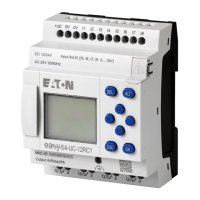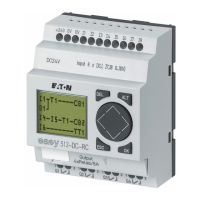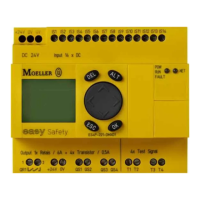6. Function blocks
6.1 Manufacturer function blocks
Operating principle
SR function block - shift register (BIT)
A rising edge at FP (ForwardPulse) causes the bit value to be accepted at data input
FD (ForwardData) into the first register field Q1. The original contents of the register
fields are then moved by one field in the direction of the next higher field numbers.
A rising edge at the BP (BackwardPulse) transfers the bit value at the BD (Back-
wardData) data input to the last register field Q8. The original contents of the register
fields are then moved by one field in the direction of the next lower field numbers.
Example: Shift register BIT mode, forward
Fig. 218: Shift register SR..: Forwards operation in BIT operating mode
Initial situation
The "Function block release by EN is necessary" option is enabled.
– SR..EN is not activated, the function block is not active.
– SR..Q7 contains a data bit 1, a 0 is contained in the other register fields.
Transfer of a data bit
– SR..EN is activated, the function block is active.
– SR..FD has the value 1.
– With the forwards pulse from SR..FP the register field SR..Q1 shifts the content of all
register fields one place forwards and accepts the 1 from SR..FD.
Transfer of a data bit
– SR..EN is activated, the function block is active.
– SR..FD has the value 0.
– With the forwards pulse from SR..FP the register field SR..Q1 shifts the content of all
register fields one place forwards and accepts the 0 from SR..FD.
Reset of the register
– SR..EN is activated, the function block is active.
– Activating SR..RE clears the content of the register.
SR function block - shift register (DWORD)
A rising edge at FP (ForwardPulse) causes the double word value at data input I1 to
be transferred to the first register field D1. The original contents of the register fields
440
easyE402/24 MN050009ENEaton.com
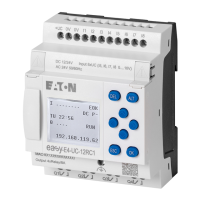
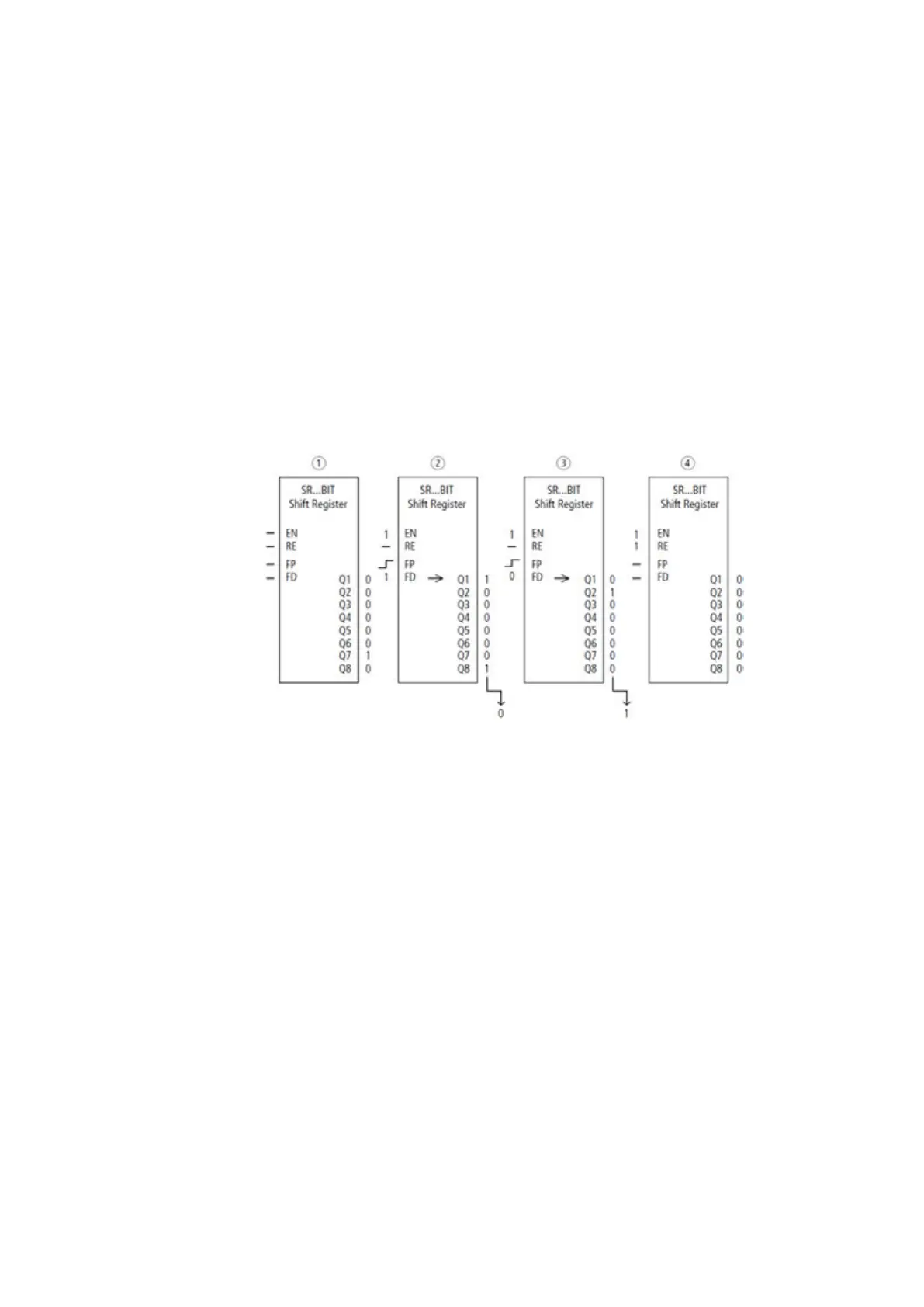